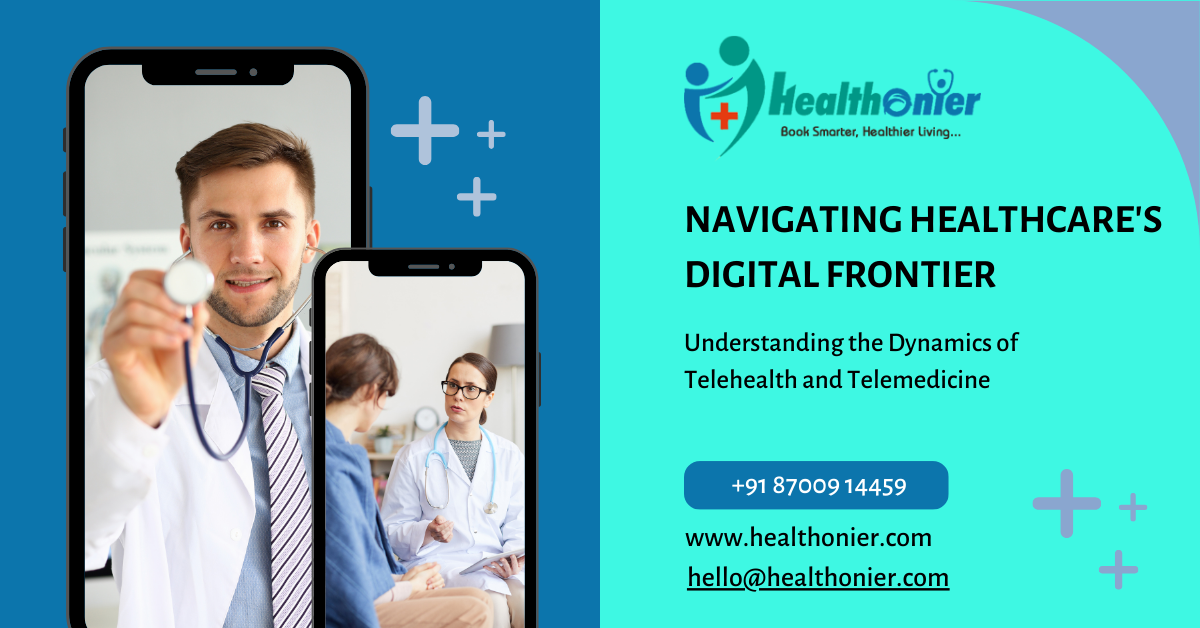In recent years, the healthcare landscape has undergone a transformative shift with the advent of telehealth and telemedicine. These terms are often used interchangeably, confusing patients and healthcare professionals. In this blog, we will delve into the nuances of telehealth vs. telemedicine, shedding light on their distinctions and highlighting their impact on the delivery of healthcare services.
Defining the Terms: Telehealth and Telemedicine
Let’s start by clarifying the definitions of these two terms. Telehealth is a broad umbrella encompassing a range of healthcare services delivered remotely, leveraging digital communication technologies. It includes clinical services and non-clinical activities such as health education, administrative meetings, and support groups.
On the other hand, telemedicine refers specifically to providing clinical services through remote technologies. This could involve virtual consultations, remote monitoring, and even artificial intelligence to aid diagnosis and treatment planning.
Accessibility and Convenience: Bridging Gaps in Healthcare
One of the significant advantages of both telehealth and telemedicine is the enhanced accessibility they offer. Patients can connect with healthcare professionals from the comfort of their homes, eliminating the need for travel and reducing barriers to healthcare access. In rural or underserved areas, these technologies are crucial in bridging the gap and ensuring that individuals receive timely medical attention.
The integration of telehealth and telemedicine into healthcare systems has led to improved convenience for patients. Busy schedules and long waiting times are no longer insurmountable obstacles, as virtual consultations allow for flexibility in appointment scheduling. This convenience can significantly enhance patient compliance with treatment plans and follow-up appointments.
Focus on Telehealth: A Holistic Approach to Healthcare
Telehealth, being the broader term, extends beyond clinical consultations. It encompasses a holistic approach to healthcare, incorporating preventive measures, education, and ongoing support. For example, remote monitoring of chronic conditions is a facet of telehealth that empowers patients to actively participate in managing their health.
The versatility of telehealth also extends to mental health services, where virtual counselling sessions and therapy have proven effective in providing timely support. This comprehensive approach to healthcare aligns with the evolving concept of patient-centered care, emphasizing the importance of addressing the individual’s overall well-being.
Telemedicine in Action: Redefining the Doctor-Patient Relationship
While telehealth embraces a wide array of healthcare activities, telemedicine zooms in on clinical interactions. Virtual consultations have become a norm, enabling patients to connect with healthcare professionals for diagnosis, treatment planning, and follow-up care. Using secure communication platforms ensures patient information’s confidentiality, maintaining the doctor-patient relationship’s integrity.
Telemedicine has proven to be particularly effective in specialties such as dermatology and radiology. Dermatologists can assess skin conditions through high-quality images, while radiologists can interpret diagnostic imaging remotely. This expedites the diagnostic process and facilitates collaboration among healthcare professionals across geographical boundaries.
Telehealth vs. Telemedicine: Striking the Balance
Understanding the distinctions between telehealth and telemedicine is crucial for healthcare providers and patients. Striking the right balance between these two approaches can optimize the delivery of healthcare services. While telemedicine addresses immediate clinical needs, telehealth contributes to a more holistic and patient-centric healthcare experience.
In conclusion, the dynamic duo of telehealth and telemedicine is reshaping the healthcare landscape, bringing about positive changes in accessibility, convenience, and the overall patient experience. By leveraging these technologies strategically, healthcare providers can achieve a harmonious blend of clinical excellence and comprehensive care.
Read More: Maximizing the Benefits of Telemedicine Appointments: A Comprehensive Guide


